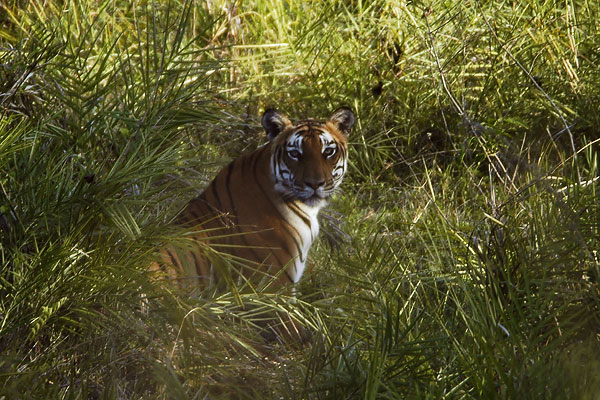The concept of the unity of all life, and its roots in and dependence on the environment, is an ancient one in South Asia. A ll life is deemed sacred, each creature has its place and function in nature’s mosaic. This view lay at the root of the advocacy of compassion for all living creatures and ahims a (non-violence) preached by the Buddha and Mahavira.It was as early as in the 3rd-Century B.C. that Emperor Ashoka issued his edicts, which included injunctions concerning human behavior towards animals, and set up sanctuaries for wild animals. This designation of areas as protected is perhaps the first such governmental decree on record anywhere. But even before this, in Vedic literature of a thousand years earlier, there is mention of sacred groves in which all life was protected. The Buddha himself preached his first sermon in a Deer Park near Sarnath, a place some miles away from Varanasi.
a (non-violence) preached by the Buddha and Mahavira.It was as early as in the 3rd-Century B.C. that Emperor Ashoka issued his edicts, which included injunctions concerning human behavior towards animals, and set up sanctuaries for wild animals. This designation of areas as protected is perhaps the first such governmental decree on record anywhere. But even before this, in Vedic literature of a thousand years earlier, there is mention of sacred groves in which all life was protected. The Buddha himself preached his first sermon in a Deer Park near Sarnath, a place some miles away from Varanasi.
With the passage of the centuries, much of the strength of this tradition was, in practice, lost, though the precepts were never wholly forgotten. In more recent years, it was, paradoxically, the hunters, the shikaris of the subcontinent, who played a major role in the preservation of forests and wildlife. It was essentially for sport that the Mughal emperors declared large tracts of forest as reserves. Both prior to and during British rule, other princes did the same in territories they controlled, the “Native States” that were permitted to survive under British control and protection. Many enlightened British administrators in India who started as shikaris turned into pioneer conservationists and earnest naturalists, as did many Indian shikaris.
tradition was, in practice, lost, though the precepts were never wholly forgotten. In more recent years, it was, paradoxically, the hunters, the shikaris of the subcontinent, who played a major role in the preservation of forests and wildlife. It was essentially for sport that the Mughal emperors declared large tracts of forest as reserves. Both prior to and during British rule, other princes did the same in territories they controlled, the “Native States” that were permitted to survive under British control and protection. Many enlightened British administrators in India who started as shikaris turned into pioneer conservationists and earnest naturalists, as did many Indian shikaris.
The years of World War II and those that immediately followed brought devastation, at an ever increasing rate, to the region’s forests and wildlife. To the insistent clang of alarm bells and pressure from public opini on, led by informed and active conservationists, generally sympathetic (though, in this behalf, not always effective) governments have established national parks and sanctuaries all over the region (India alone now has 55 National Parks and 247 Sanctuaries). Thanks to these, many species that would otherwise have disappeared by the end of this century have been assured a future and a number are thriving again in parks and sanctuaries in which habitats favorable to them have been preserved and even, in some cases, extended by reclamation.
on, led by informed and active conservationists, generally sympathetic (though, in this behalf, not always effective) governments have established national parks and sanctuaries all over the region (India alone now has 55 National Parks and 247 Sanctuaries). Thanks to these, many species that would otherwise have disappeared by the end of this century have been assured a future and a number are thriving again in parks and sanctuaries in which habitats favorable to them have been preserved and even, in some cases, extended by reclamation.
It is a selection of these parks and sanctuaries and what can be seen in them that is presented in the pages that follow. The variety is fascinatingly rich and the settings are among the most beautiful to be seen anywhere. In view of shared characteristics, Indian and Nepali sites have been grouped together, while Sri Lankan sites have been placed in a separate section owing to certain special features to be seen there.
What the visitor will find most heartening is that these parks and sanctuaries have been set up and are being extended in countries where pressures of human population growth are being most severely felt, where only by conscious self-restraint and self-denial can the temptation to plunder nature’s unguarded treasures for immediate and urgent need, be resisted. Serious lapses, unfortunately, still occur, but it is being increasingly realized that shortsightedness in such matters would, in the not too distant future, bring disaster to both man and beast.





